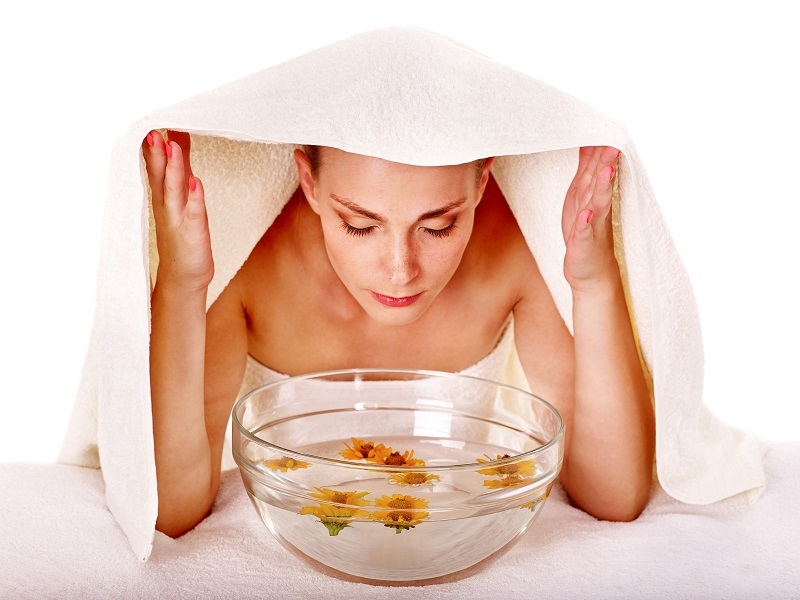Hydrangea Care 101: Essential Guidelines
Posted on 13/08/2025
Hydrangea Care 101: Essential Guidelines
Hydrangeas are beloved for their lush blooms and versatile beauty, making them a garden favorite worldwide. Whether you're an experienced gardener or a first-time plant parent, mastering the right approach to hydrangea care is essential for healthy growth and vibrant flowers. In this comprehensive guide, you'll discover every aspect of nurturing hydrangeas, from planting and watering to pruning and troubleshooting common problems.
Understanding Hydrangeas: An Introduction
Before diving into care specifics, it’s important to become familiar with what makes hydrangeas unique. These flowering shrubs come in several species and varieties, each with its own needs and bloom characteristics. The most common types include:
- Hydrangea macrophylla (Bigleaf Hydrangea)
- Hydrangea paniculata (Panicle Hydrangea)
- Hydrangea arborescens (Smooth Hydrangea)
- Hydrangea quercifolia (Oakleaf Hydrangea)
- Hydrangea serrata (Mountain Hydrangea)
Bigleaf hydrangeas, known for their mophead or lacecap flowers, are particularly famous for their ability to change color based on soil pH, captivating gardeners with blooms ranging from blue to pink. Meanwhile, panicle and oakleaf hydrangeas boast exceptional cold tolerance and panicle-shaped blossoms.

Choosing the Right Location for Your Hydrangeas
Proper placement is fundamental in hydrangea care. The ideal spot depends on species but generally follows these guidelines:
- Light: Most hydrangeas prefer morning sun and afternoon shade. Too much direct sun can scorch leaves, while too little sun can reduce flowering.
- Air Circulation: Ensure good airflow to prevent diseases such as powdery mildew.
- Protection: Select sites shielded from harsh winds, which can damage blooms and foliage.
Understanding your specific hydrangea’s requirements is key. For example, panicle hydrangeas can tolerate more sun, while bigleaf hydrangeas thrive in dappled shade.
Soil Preparation Tips
Soil quality is perhaps the most crucial factor in achieving thriving hydrangeas. Here’s what you need to know:
- Well-draining soil is a must to prevent root rot.
- Hydrangeas prefer a soil that is rich in organic matter; amend with compost or peat moss if necessary.
- pH levels affect bloom color in species like Hydrangea macrophylla. Acidic soil (pH below 6) produces blue flowers, alkaline soil (pH above 7) yields pink blooms. Aim for a balanced pH if you desire purple tones.
Planting Hydrangeas: Step-by-Step Guide
Planting hydrangeas correctly sets the foundation for decades of beauty. Follow these steps for optimal results:
- Choose the right time: Plant hydrangeas in early spring or fall to minimize transplant shock.
- Dig a hole: The hole should be twice as wide as the root ball and equally deep.
- Loosen the roots: Gently loosen tangled roots before placing in the hole.
- Backfill and water: Fill in with enriched soil and water thoroughly to eliminate air pockets.
- Mulch: Apply a 2-3 inch layer of organic mulch to retain moisture and regulate temperature.
Watering Hydrangeas: Best Practices
Proper hydration is crucial to hydrangea health, especially in their first year. Here’s how to get it right:
- Water deeply at the base, ensuring roots receive ample moisture.
- Aim for consistency: Hydrangeas prefer even soil moisture. Avoid both drought and waterlogging.
- Monitor weather: During hot or dry periods, increase watering frequency.
Tip: Leaf wilting is an early sign your hydrangea needs water, but leaves bouncing back in the evening may indicate temporary heat stress rather than a true deficit.
Avoiding Common Watering Pitfalls
- Don’t water the leaves: Wet foliage invites fungal diseases. Focus on the root zone.
- Avoid overhead irrigation: Drip hoses or soaker hoses are ideal for efficient hydrangea care.
Fertilizing Hydrangeas for Stunning Blooms
Hydrangeas don’t require excessive feeding, but appropriate fertilization promotes robust growth and abundant blooms. Follow these fertilizing tips:
- Feed in early spring and, if needed, again after initial flowering.
- Choose a balanced, slow-release fertilizer (10-10-10 NPK) for general care.
- For blue hydrangeas, consider fertilizers low in phosphorus and high in potassium to maintain color.
- Too much fertilizer can lead to leafy growth at the expense of flowers.
Always follow package directions and adjust applications based on your plant's performance and soil conditions.
Pruning Hydrangeas: When and How to Cut Back
Pruning is integral to successful hydrangea care but varies by species. Understanding your hydrangea type is essential:
- Old wood bloomers (Bigleaf and Oakleaf Hydrangeas): Prune just after they finish flowering, as they bloom on last year’s stems.
- New wood bloomers (Smooth and Panicle Hydrangeas): Prune in late winter or early spring before growth resumes.
Step-by-Step Pruning Instructions
- Use clean, sharp scissors or pruning shears to prevent disease transmission.
- Remove dead or damaged stems first.
- Shape the plant lightly, avoiding cutting more than one-third of the shrub at once.
- For rejuvenation, cut one or two of the oldest stems down to the base annually to encourage new growth.
Tip: If uncertain about your hydrangea type, wait to prune until after flowering; this ensures next year's blooms aren't accidentally removed.
Common Hydrangea Issues & How to Solve Them
Dealing with Pests and Diseases
While hydrangeas are relatively pest-resistant, occasional problems may arise:
- Powdery mildew: Appears as white coating; improve airflow and avoid overhead watering.
- Aphids, spider mites, and scale insects: Spray with insecticidal soap or a strong jet of water.
- Leaf spots (fungal): Remove infected leaves and ensure good plant spacing.
Solving Bloom Problems
- No blooms or few flowers: Often caused by improper pruning, too much shade, or excess nitrogen.
- Leaf yellowing: May indicate overwatering, poor drainage, or nutrient deficiency.
- Color not as expected: Adjust soil pH or amend with garden sulfur (for blue) or lime (for pink).
Seasonal Hydrangea Care Calendar
Staying on schedule is key to healthy hydrangeas year-round. Here’s a quick reference:
- Spring: Mulch, fertilize, check for winter damage, prune new wood bloomers.
- Summer: Water consistently, deadhead spent flowers for tidier appearance.
- Fall: Reduce feeding, remove damaged leaves, mulch to protect roots from cold.
- Winter: In colder climates, cover plants with burlap or frost cloth if late freezes threaten buds.
Hydrangea Container Care Guide
If space is limited, many hydrangea varieties adapt well to growing in pots. Here’s how to succeed:
- Use a large, sturdy container with drainage holes.
- Repot every 2-3 years, refreshing with nutrient-rich soil.
- Monitor moisture closely, as containers dry out faster than the ground.
- Winterize by moving pots to a sheltered spot or wrapping the pots' exterior.
Tips for Beautiful Hydrangea Blooms
For the most spectacular hydrangea flowers, remember these tips:
- Regularly deadhead spent blooms, except in fall; faded flowers can help protect tender buds.
- Don't over-fertilize; less is often more when it comes to hydrangea feeding.
- Mulch annually with leafy compost or bark chips to enrich soil.
- Test soil pH every few years to ensure optimal growing conditions for your desired flower color.
- Keep up with routine pruning and remove old stems to invigorate growth.

Hydrangea Care: Frequently Asked Questions
How often should I water hydrangeas?
Hydrangeas require consistent soil moisture but dislike waterlogged conditions. In most climates, watering deeply once or twice a week is sufficient; increase in hot weather or sandy soils. Monitor soil before rewatering to prevent root rot.
Can I change my hydrangea's flower color?
Bigleaf hydrangeas (Hydrangea macrophylla) can display varying colors based on soil pH. Adding garden sulfur or aluminum sulfate can produce blue blooms, while garden lime encourages pink.
Why aren't my hydrangeas blooming?
Lack of blooms may result from pruning at the wrong time, insufficient sunlight, frost damage to buds, or overfertilization. Diagnose by reviewing your recent care practices for improvements.
Are hydrangeas heavy feeders?
No, hydrangeas respond best to light, regular feeding. Overfertilizing can harm the plant and diminish flowering.
Conclusion: Mastering Hydrangea Care for Thriving Gardens
With their captivating blooms and graceful foliage, hydrangeas elevate any garden landscape or patio. By investing a little time in proper hydrangea care--from soil preparation to mindful pruning--you’ll enjoy vigorous, flower-laden plants year after year. Understanding your specific hydrangea variety, monitoring soil and water, and applying these essential guidelines will ensure your hydrangeas remain healthy and spectacularly beautiful, providing lasting joy and allure to your outdoor space.
Follow these expert hydrangea care tips and transform your garden into a vibrant, blossoming retreat!







